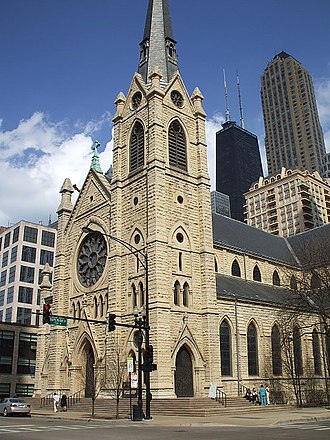| Sugar Run Dolomite | |
|---|---|
| Stratigraphic range: Silurian | |
 Chicago's Holy Name Cathedral, made of Sugar Run Dolomite, aka "Athens marble" or "Lemont limestone" | |
| Type | Formation |
| Lithology | |
| Primary | dolomite |
| Location | |
| Region | Illinois |
| Country | United States |
| Type section | |
| Named for | Sugar Run Stream |
The Sugar Run Dolomite is a geologic formation in Illinois. It is a finely-bedded dolomite, preserving fossils dating back to the Silurian period. This formation is named for the Sugar Run stream in Joliet, along which it is well exposed. The dolomite is off-white/grey on freshly cut surfaces but over time oxidizes to a distinctive cream yellow color due to trace presence of iron. It is a member of the Niagaran series. [1]